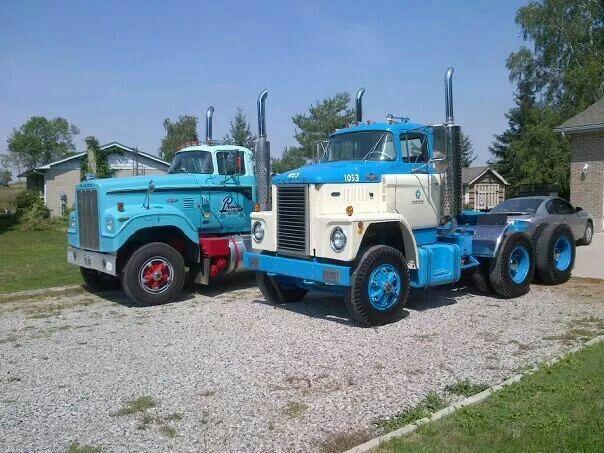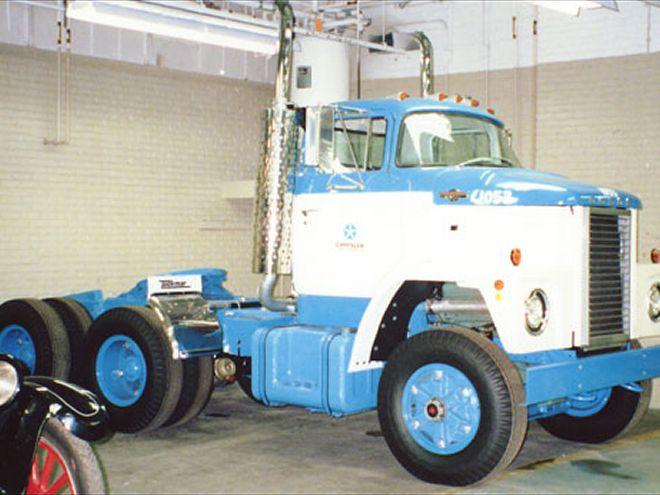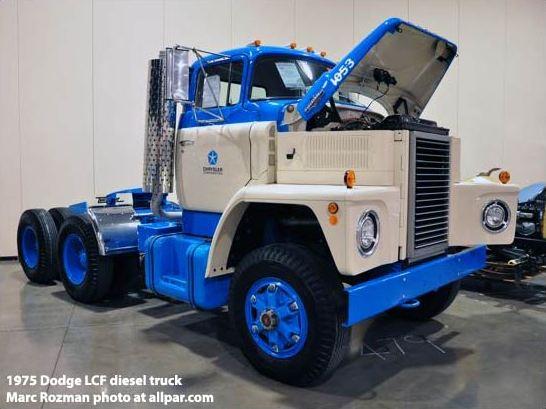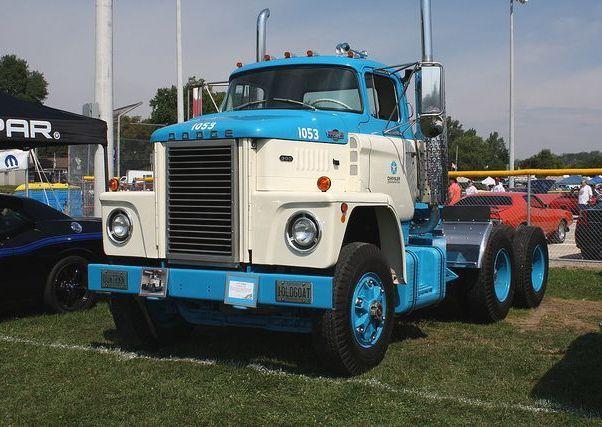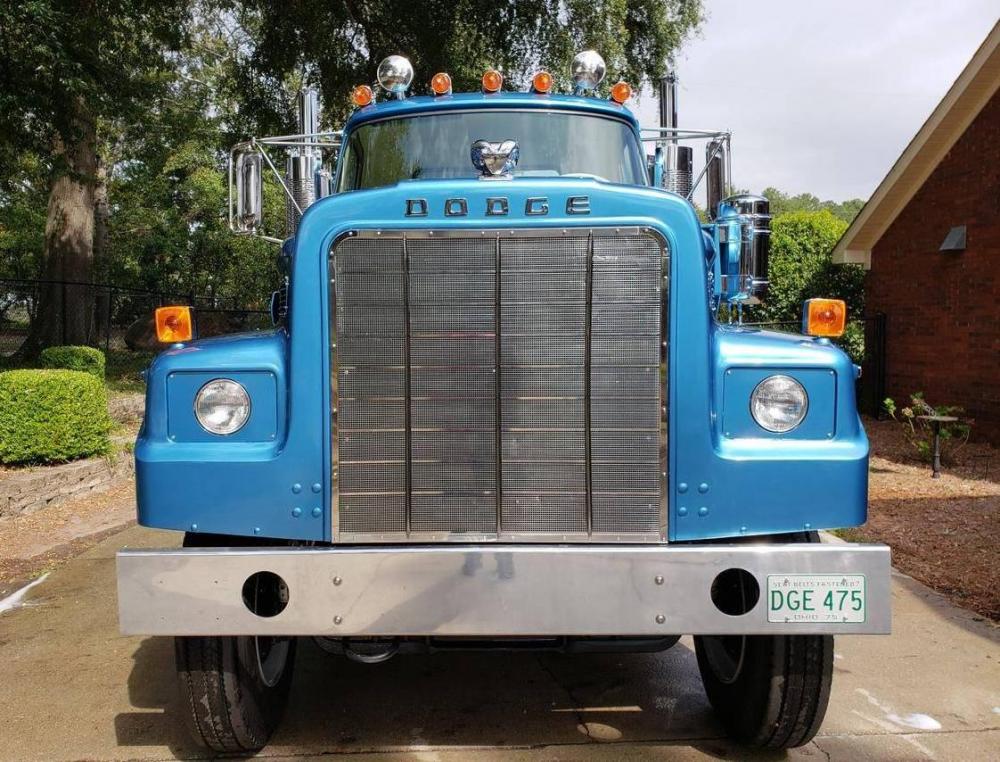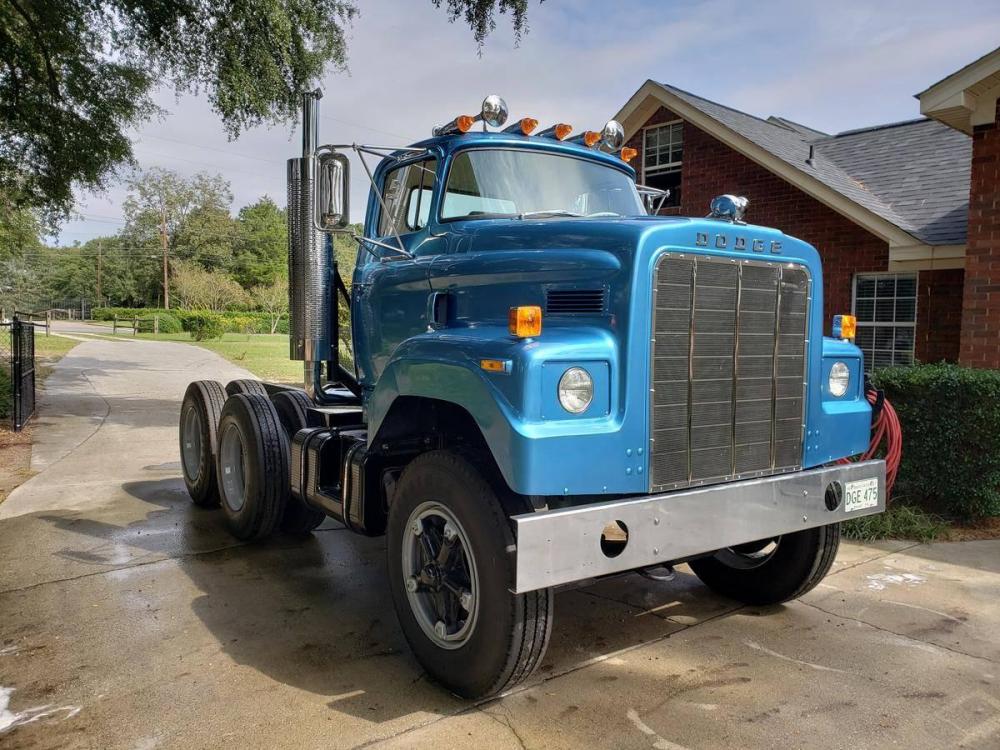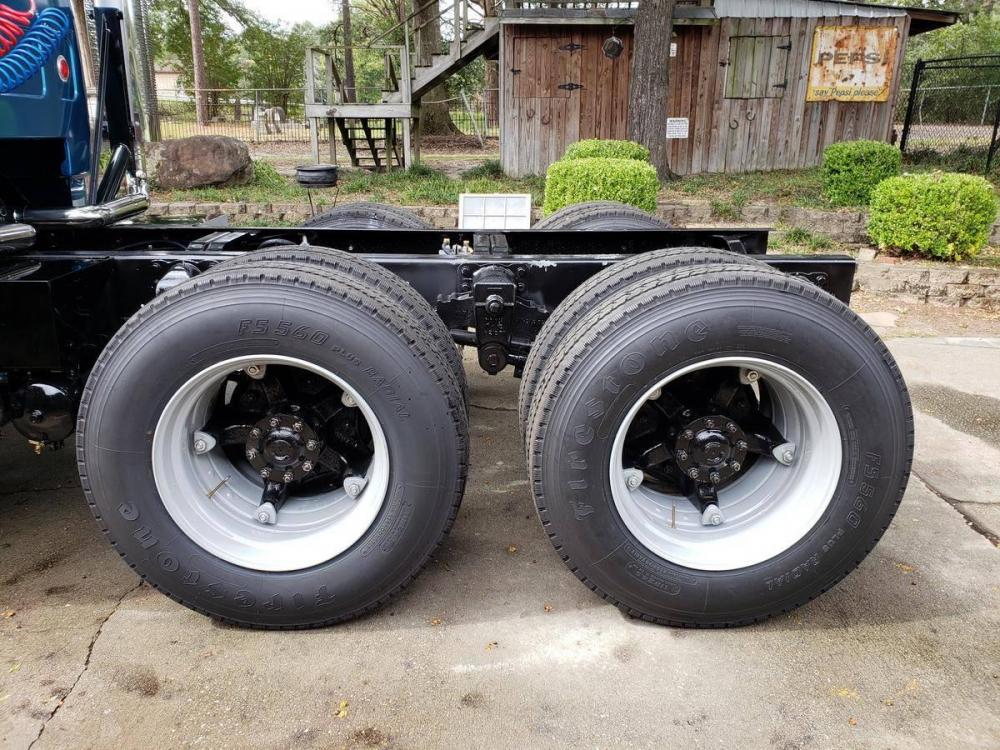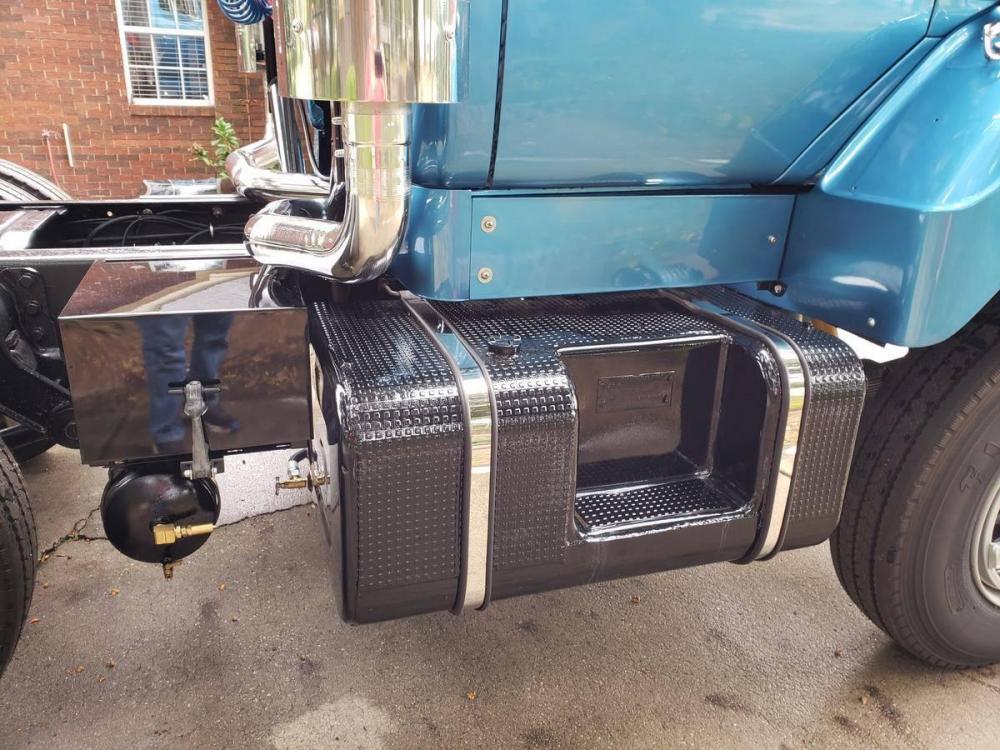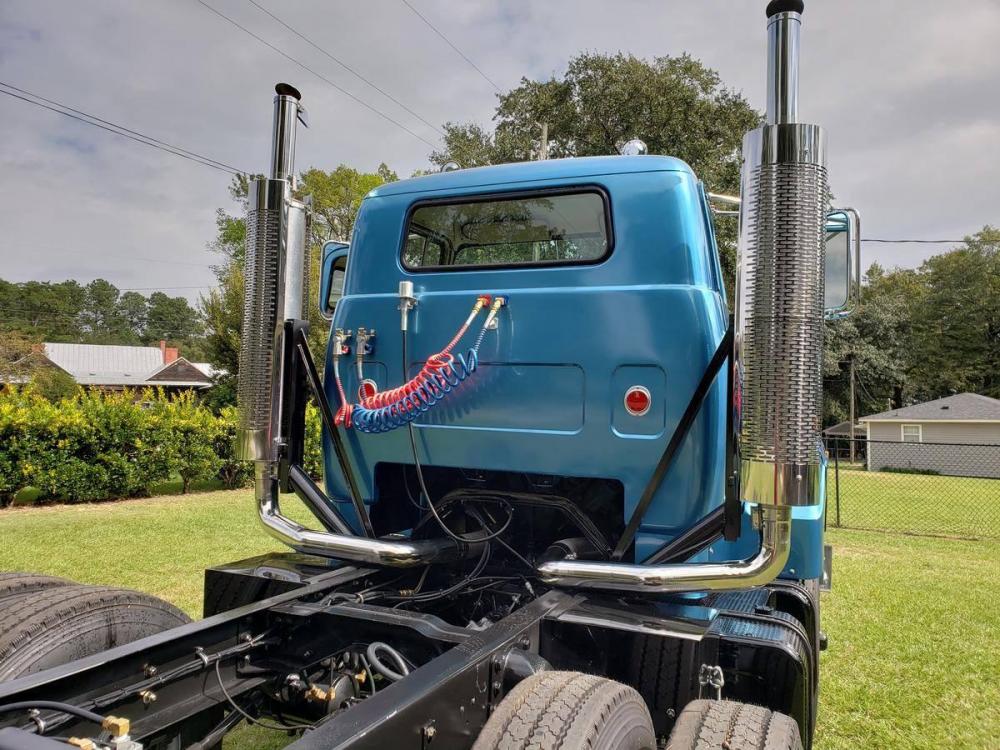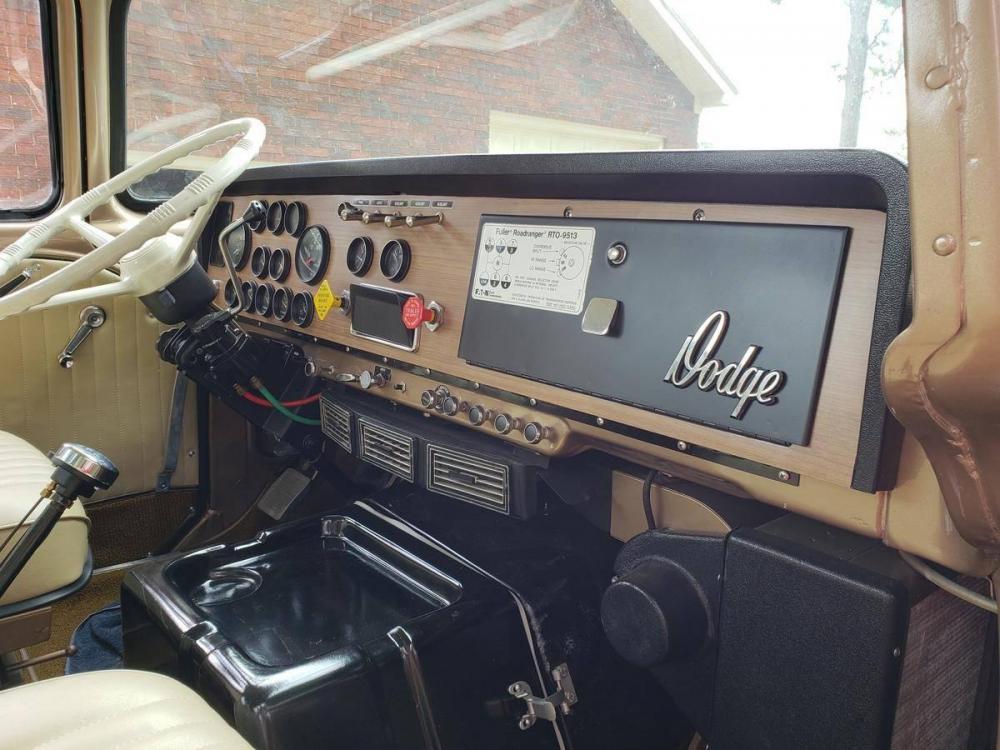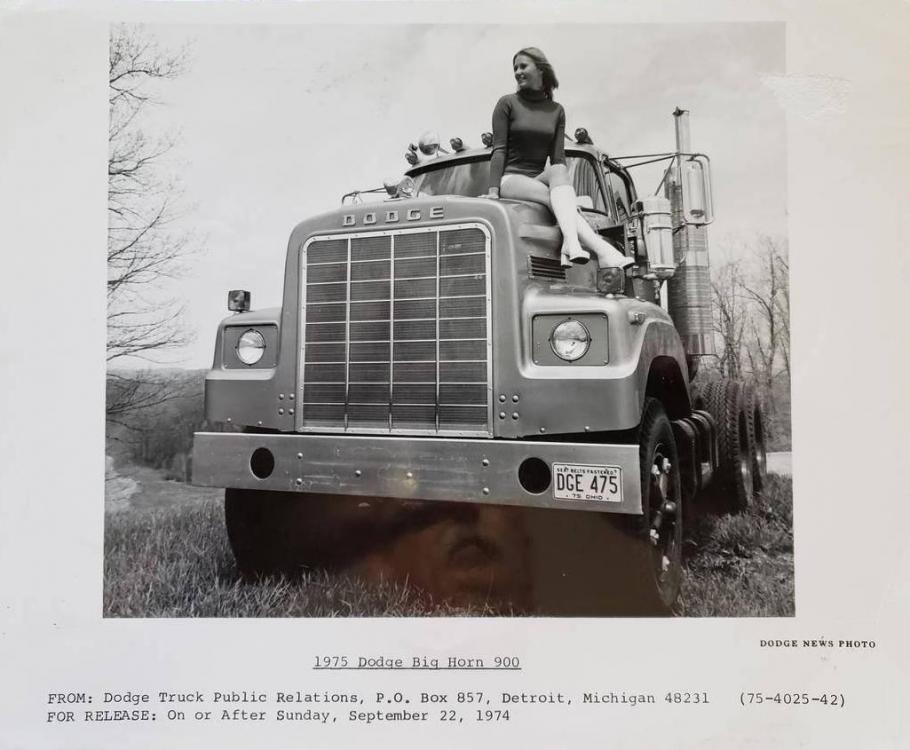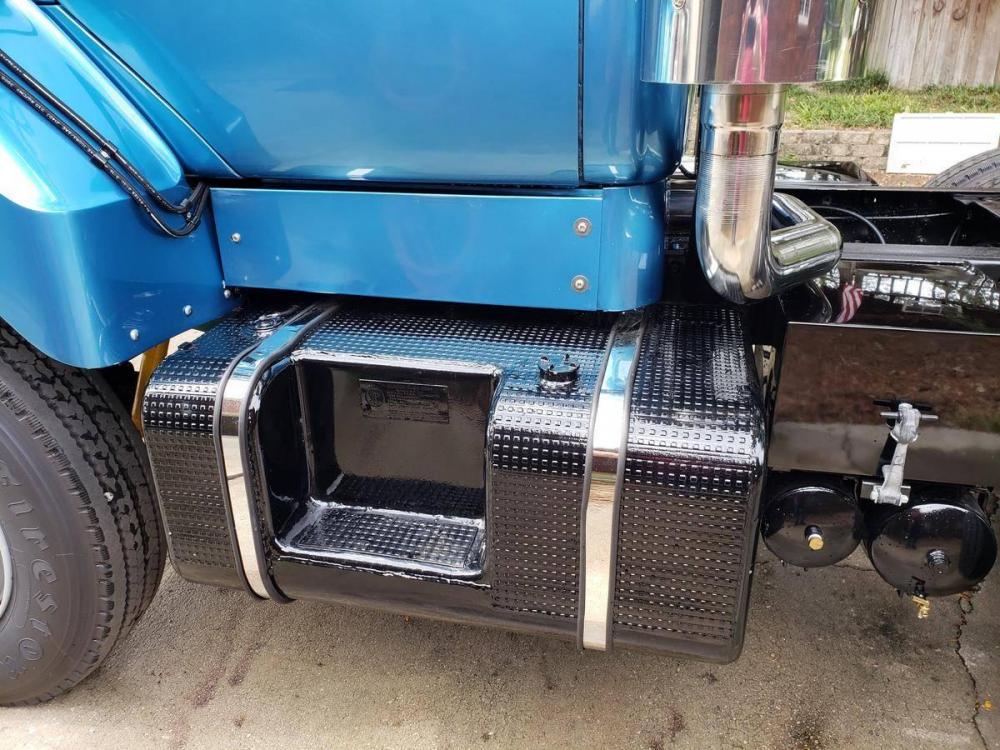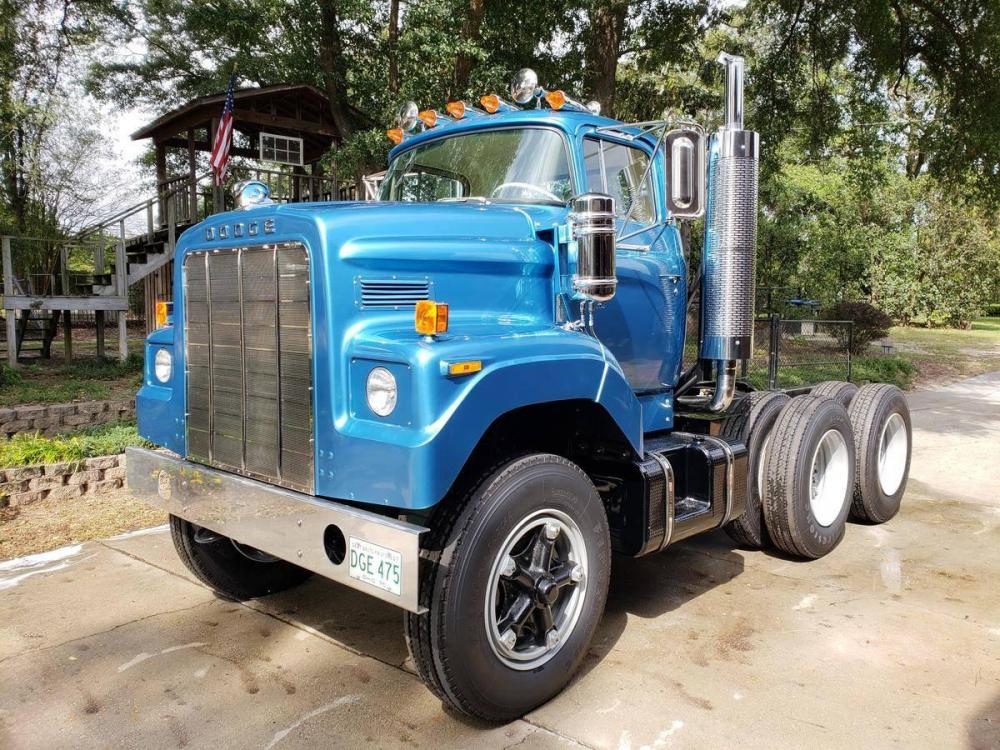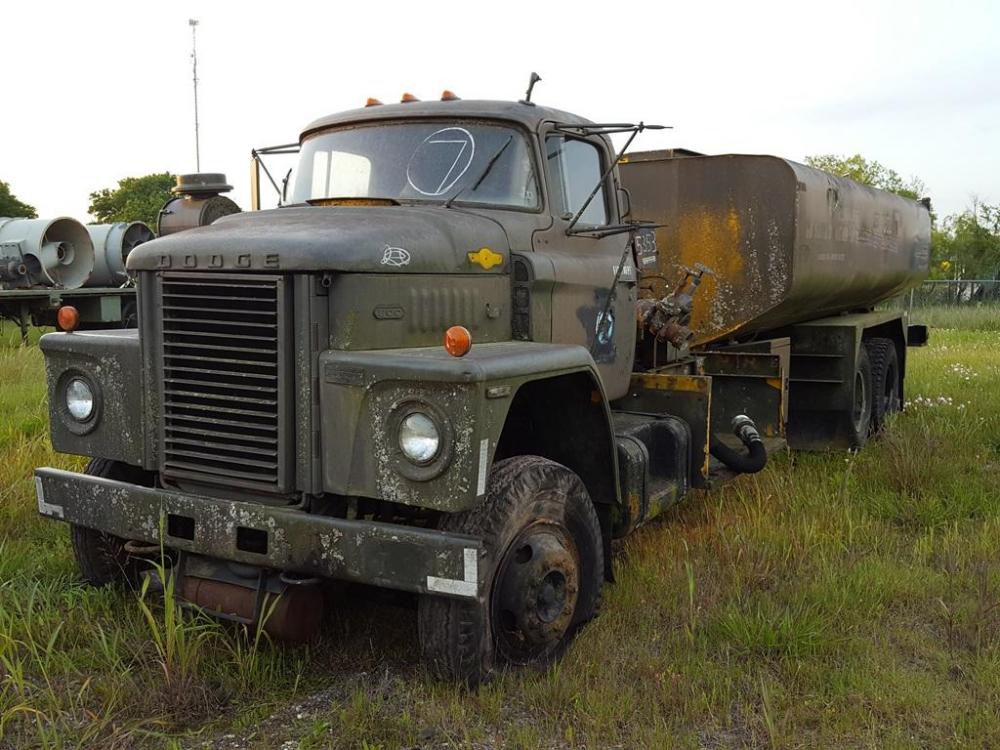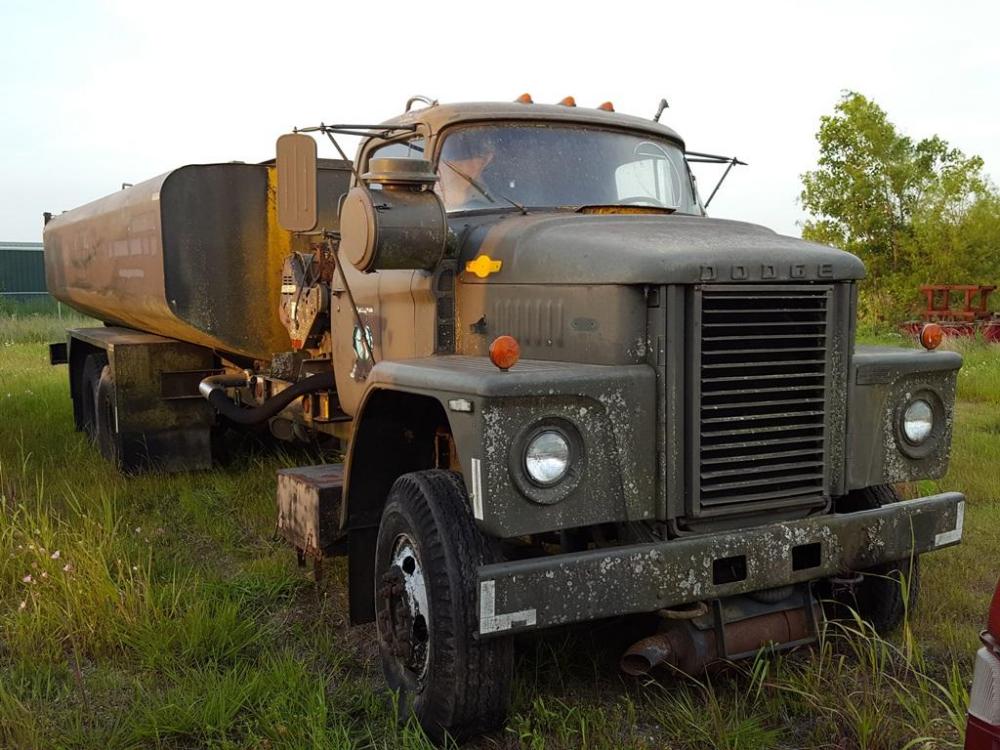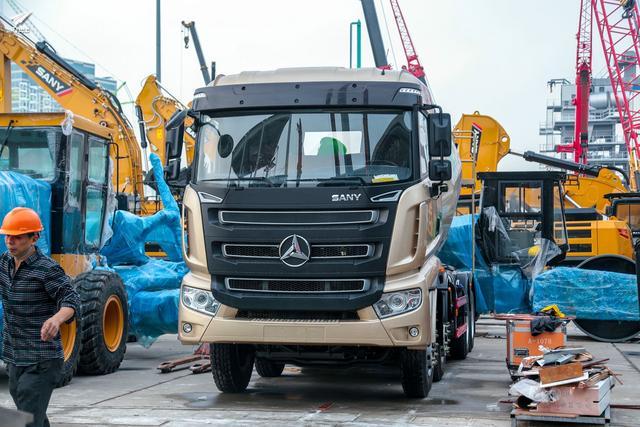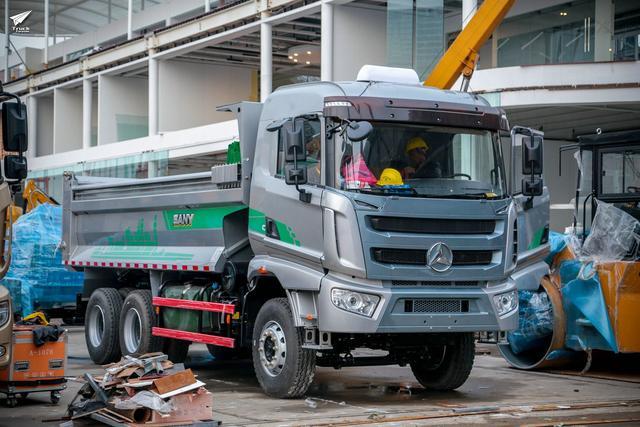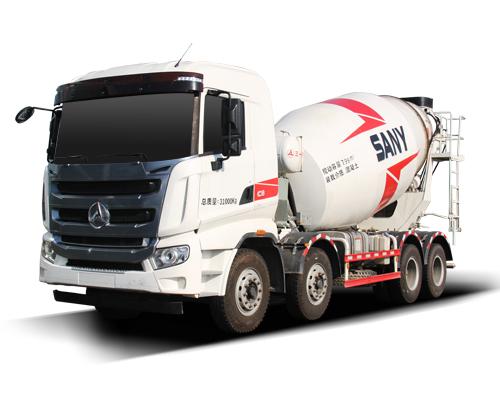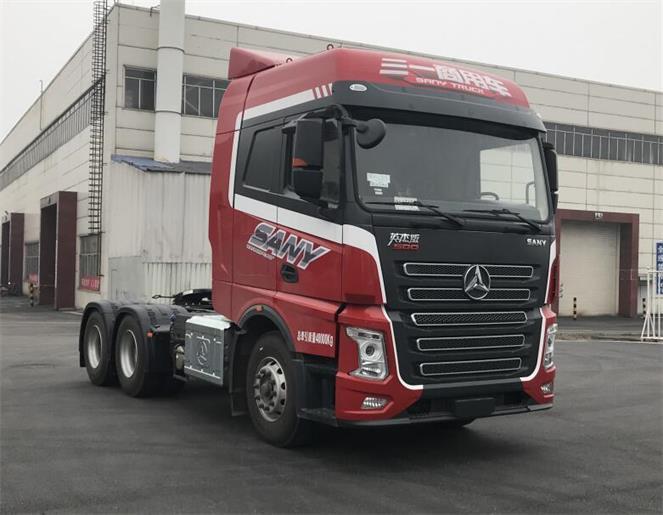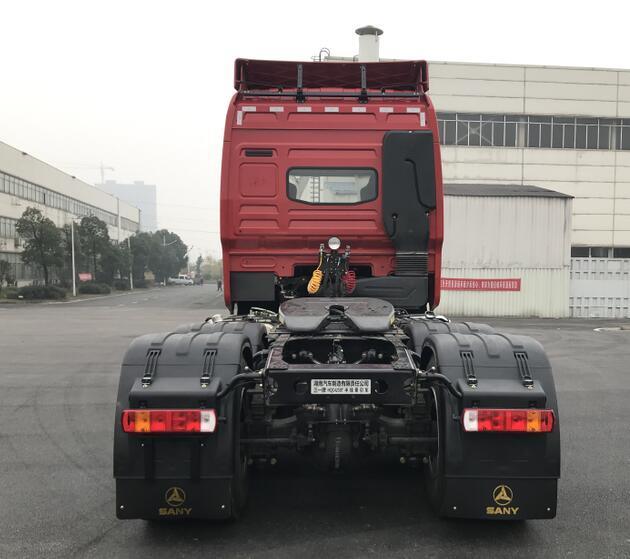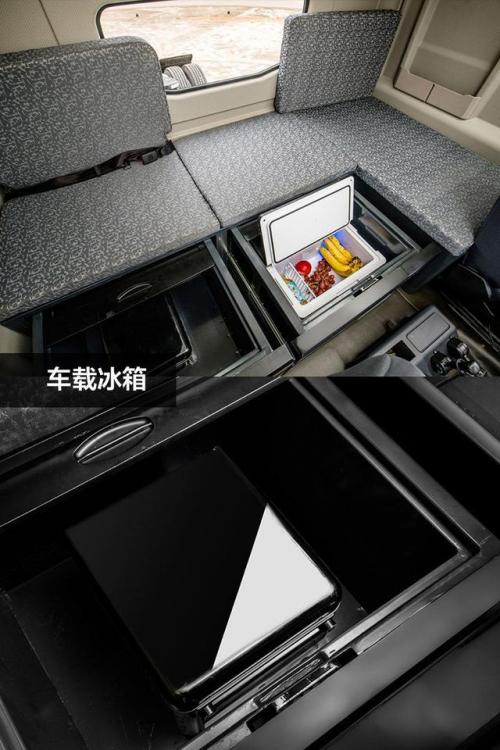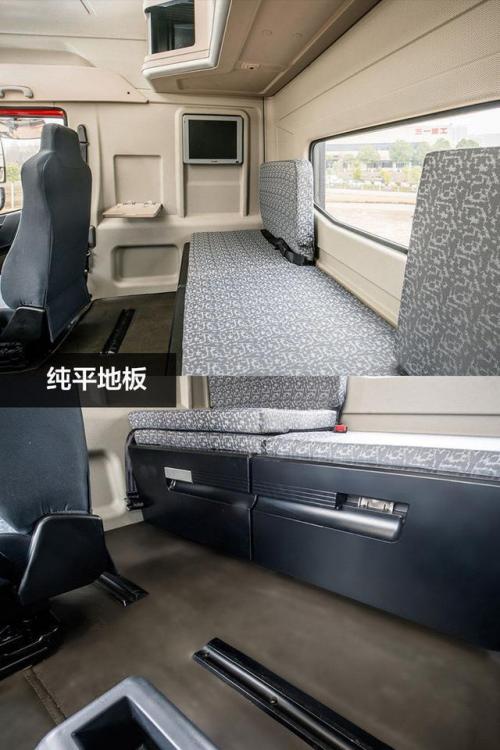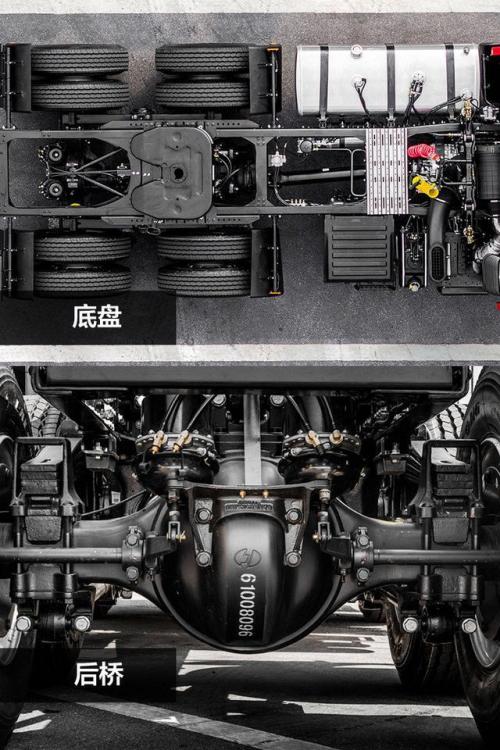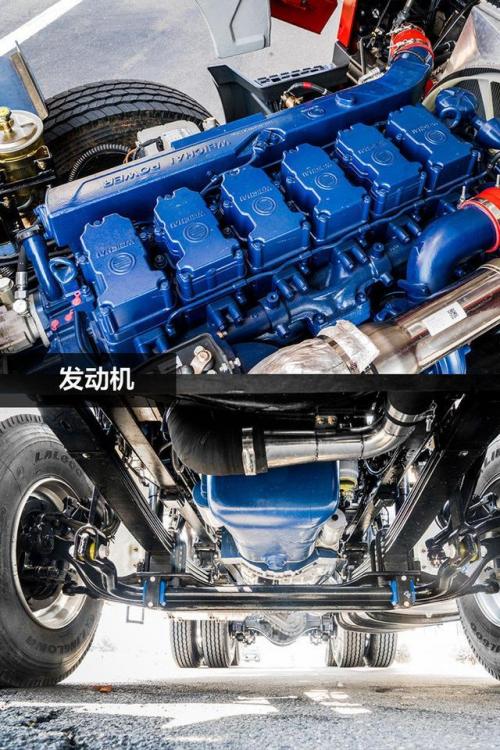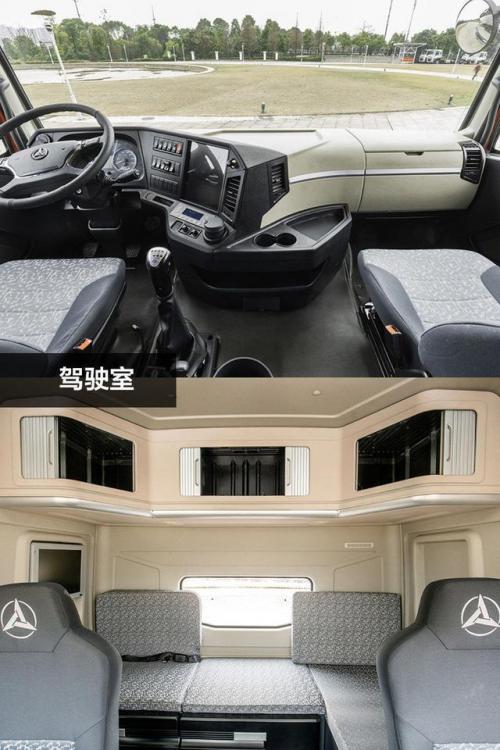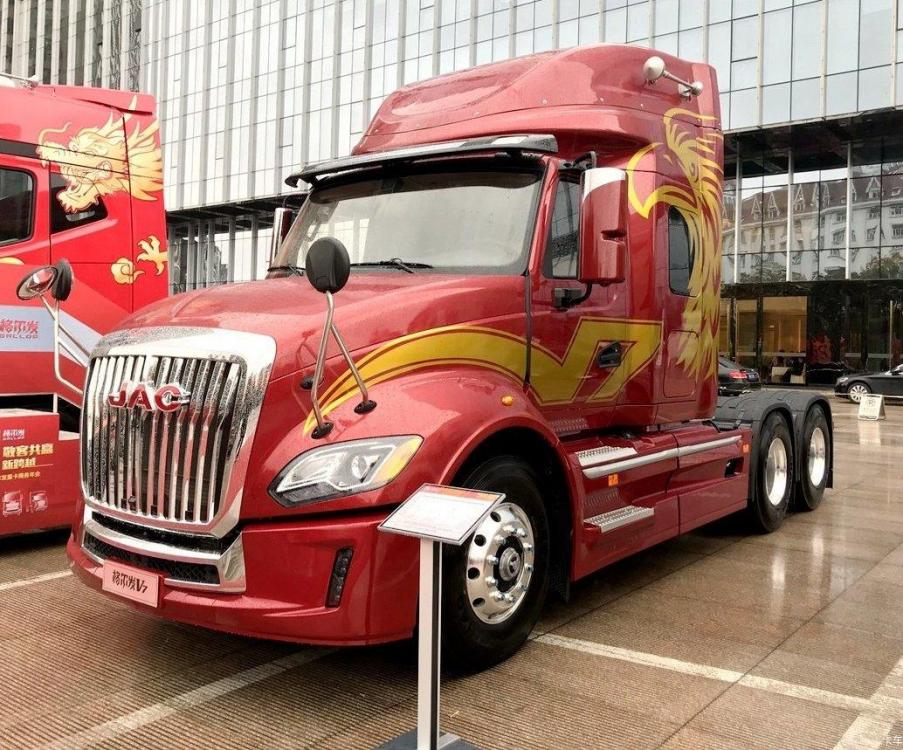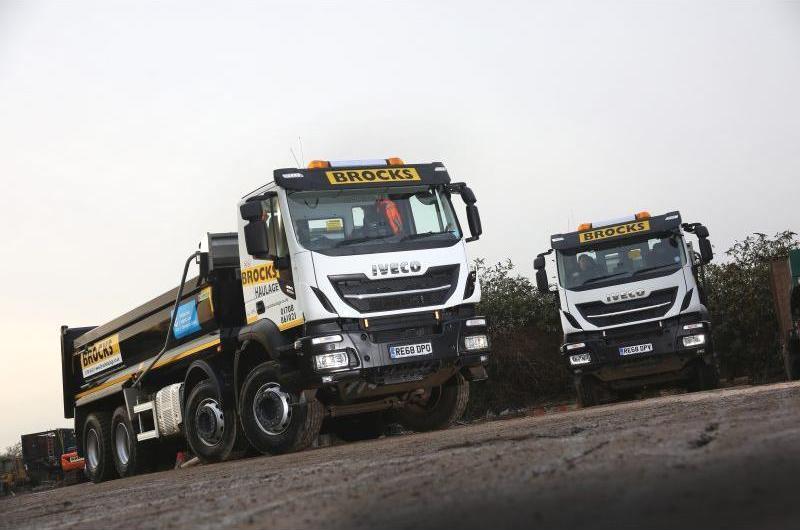
kscarbel2
Moderator-
Posts
18,854 -
Joined
-
Days Won
114
Content Type
Profiles
Forums
Gallery
Events
Blogs
BMT Wiki
Collections
Store
Everything posted by kscarbel2
-
Peterbilt to launch Model 567 Heritage edition in September
kscarbel2 replied to kscarbel2's topic in Trucking News
-
All in all, I still think the 567 "Heritage" is a decent looking truck. https://www.bigmacktrucks.com/topic/45657-peterbilt-to-launch-model-567-heritage-edition-in-september/?tab=comments#comment-336547
-
The 1975 CNT900 on the right, originally part of Chrysler's fleet, was in the Walter P. Chrysler museum until it closed in December 2012. It was sold at auction. .
-
-
Edward Lampert’s Plan for Sears: Smaller Stores, Less Apparel The Wall Street Journal / February 13, 2019 Edward Lampert, who steered Sears into bankruptcy and kept it alive with a $5.2 billion offer for its assets, says he will sell or sublease some of the 425 remaining stores, devote extra space to tools and appliances, and open more smaller stores. Edward Lampert has a plan for Sears after its trip through bankruptcy: smaller stores and less apparel. The hedge-fund manager, who steered Sears into bankruptcy and kept it alive with a $5.2 billion offer for its assets, says he will sell or sublease some of the 425 remaining stores. He plans to devote more of the retail space to tools and appliances. He also wants to open more smaller stores, similar to one in Oak Brook, Ill., which at 62,000 square feet is about one-third its original size. “Our goal is to continue to shrink the size of our stores,” Mr. Lampert said in his first interview since his rescue plan was approved by the bankruptcy court this week. “If I had my druthers, I’d rather be bigger than smaller. We still have enough of a critical mass.” The restructured company, which doesn’t yet have a new corporate name, will be composed of 223 Sears stores and 202 Kmart locations, as well as the Kenmore and DieHard brands. Sears sold its Craftsman brand to Stanley Black & Decker in 2017 but retains a license to sell products under the name. Mr. Lampert said he would remain the company’s chairman but would hire a new CEO to carry out his vision. The billionaire, who rescued Kmart from bankruptcy and merged it with Sears in 2005, had served as chief executive since 2013, but he relinquished that role when the company filed for bankruptcy in October. The shrunken Sears will compete against bigger retailers such as Home Depot Inc., Lowe’s Co s., Best Buy Co. and Amazon.com Inc. After closing hundreds of stores in recent years, it will lack the economies of scale and negotiating clout with suppliers that the larger players wield. “They have already been category-killed by the big box chains,” said Burt Flickinger, managing director of consulting firm Strategic Resource Group. He said Mr. Lampert’s idea of focusing on so-called hard lines was a good one, but is a decade too late. “They have lost the confidence of the vendor community,” he continued. “Sears and Kmart prices are no longer competitive.” Once the largest seller of major appliances in the U.S., Sears has fallen to fourth place, behind Lowe’s, Home Depot and Best Buy, according to research firm TraQline. But it still commands a 12.9% share of the market, which has $36 billion in annual sales, giving it a position from which to rebuild. With J.C. Penney Co. recently announcing it would no longer sell appliances, Sears has one less competitor in the mall. “They have a shot, but it’s a long shot,” said Craig Johnson, president of consulting firm Customer Growth Partners. “Most of the profits on appliances are made on the servicing side, and Sears still has a good service business.” In addition to the retail stores and brands, the restructured company includes Sears Auto Centers, Sears Home Services and logistics company Innovel Solutions Inc., which operates 11 warehouses, a fleet of trucks and specializes in delivering appliances. One challenge is that appliances are purchased far less frequently than apparel, giving shoppers fewer reasons to visit a store or website on a regular basis. Mr. Lampert’s answer is his company’s Shop Your Way loyalty program. Points can be earned not just at Sears and Kmart, but also at partner companies, including Ulta Beauty and Uber. “Shop Your Way has always been our answer for how we’re going to be more relevant,” Mr. Lampert said. During a court hearing last week, a lawyer for the creditors’ committee questioned the Shop Your Way program, noting it has consistently missed expectations. A Sears executive acknowledged that targets had been missed, but said the program would be a cornerstone of the company going forward. Mr. Lampert said Sears didn’t need to win over new customers, and could survive by doing more business with existing shoppers, something other retailers have echoed by launching loyalty programs that reward their best customers. The Sears chairman said he hoped to win back suppliers now that the company was in better financial health. “We have a clean balance sheet,” he said, referring to the roughly $4 billion of debt and pension obligations that were eliminated through the bankruptcy process, including $1.3 billion that was owed to Mr. Lampert’s hedge fund. “We hope suppliers take a more constructive approach.” Mr. Lampert said Sears didn’t always get credit for its innovations such as introducing curbside pickup and equipping its sales staff with iPads before it became fashionable to do so. “We did things before others,” he said. “The problem is they didn’t end up mattering enough. Whether we didn’t do it well enough or we ran out of time, or we didn’t market it enough. It wasn’t the ideas, it was making them matter and turning them into profit.” Although Mr. Lampert is buying the best Sears and Kmart locations, not all of them are profitable. “It would be very difficult to keep all 425 stores open,” he said. “We would like to maintain a presence in at least the stores that we’re in. That may be in a different location in the mall, if we were to sell the store, or sell and lease back part of the store.” In addition, Mr. Lampert is buying a number of stores that have already closed. He said those locations would probably not reopen and would likely be sold. He said a lot depends on the mall owners. “The mall owners are very influential,” Mr. Lampert said. “They were not rooting for the company to emerge from bankruptcy.” The restructured company is controlled by Mr. Lampert, but he doesn’t want Sears to stay a private company indefinitely. “Being private has certain advantages of being able to do things that public investors wouldn’t endorse,” he said, adding that must be balanced against the opportunity to raise capital as a public company. “If I am a betting person, which I am, I would say at some point we would be public again,” Mr. Lampert said.
-
It's noteworthy that Ford's Australian and European-designed vehicles don't have the wide range of "issues" that Dearborn vehicles do.
-
Ford recalls nearly 1.5 million F-150 pickups for sudden downshifts Michael Martinez, Automotive News / February 13, 2019 DETROIT — Ford Motor Co. is recalling 1.48 million previous-generation F-150 pickups after five accidents linked to potentially faulty transmissions. The vehicles, from the 2011-13 model years, can downshift without warning, Ford said. The problem is related to a 2016 recall of more than 153,000 F-150s, Expeditions, Mustangs and Lincoln Navigators from the 2011-12 model years. The affected pickups have six-speed automatic transmissions that Ford says could experience an intermittent loss of the output speed sensor signal to the powertrain control module, leading to an unintended downshift into first gear. The pickups were built at Ford's Dearborn Assembly Plant from April 28, 2010, through Oct. 28, 2013, and at the Kansas City Assembly Plant from May 18, 2010, through Nov. 18, 2013. Federal safety regulators have been investigating for a year whether to expand the 2016 recall. As of January 2018, NHTSA's Office of Defect Investigations said it had received 123 complaints of a problem "causing the vehicle to slow down suddenly without warning." Additional recalls Ford on Wednesday issued a separate recall for about 28,200 2017-19 Lincoln Continentals with faulty door latches. It also is recalling roughly 4,350 2019 Mustangs, Lincoln Navigators and Lincoln Nautiluses with instrument panel clusters that might fail to turn on. In both cases, Ford said it was unaware of any injuries related to the defects.
-
Ford Trucks International / February 13, 2019 Ford Trucks F-MAX "The Official Truck Supplier" wishes Fiesta WRC and M-Sport the very best of luck in the whitest race of the season, Rally Sweden, which takes place on 14-17 February! #RallySweden #FordTrucks #FMAX #WRC #FordFiestaWRC .
-
Based on the CNT800, the U.S. Air Force purchased "Type A/S 32 R-9 Fuel Servicing Tank Trucks". They officially had a GVW of 58,000 pounds but looked realistically like much more. A 504 cu.in. 210 horsepower Cummins V8 was paired with an Allison MT42G automatic transmission. The trucks were acquired by Consolidated Diesel Electric Company who added the 5,000 gallon tank body and discharge pumps and made the sale to the government. There were 2 or 3 sitting for sale off of Route 13 in Wilmington, Delaware years ago. Note the speedometer includes km/h because many were used in Europe. http://www.vintagemilitarytrucks.com/1972_Dodge_T-80_800-Series_Consolidated_Refueler_JumboTanker-3.htm .
-
https://www.bigmacktrucks.com/topic/55566-nemf-files-voluntary-chapter-11-petition/
-
Ford told Britain's May it is preparing alternative factory sites Reuters / February 12, 2019 Ford told British Prime Minister Theresa May that it is stepping up preparations to move production out of Britain, The Times reported on Tuesday. The automaker told the prime minister during a private call with business leaders that it is preparing alternative sites abroad. Ford, which operates two engine plants in Britain, last month said that it faces a bill of up to $1 billion if Britain leaves the Europe Union without a deal. Automakers and other manufacturers have warned about the toll a no-deal Brexit could impose, including higher tariffs, disruption to supply chains and threats to jobs. Britain is scheduled to leave the European Union on March 29. Ford is the top-selling automotive brand in Britain, which is its third-largest market and the destination for roughly one in three cars made at its plant in Cologne, Germany. It employs about 13,000 people in Britain.
-
It is a factory prototype. It's a Big Horn 900.
-
I have a bad feeling that Trump is not going to act on his March 1 deadline. I would have played this differently, but we're here with this. If he doesn't raise tariffs from 10% to 25% on March 1, we're obviously going to lose face.
-
-
Leading Chinese construction equipment maker SANY decided to enter the highway market several years ago, after having produced concrete mixer chassis for its line of bodies from around 2010. These trucks are available with engines rated from 400 to 550 horsepower. .
-
They changed the length laws to make conventional (bonneted) cabs viable. They haven't caught on yet, but the new rules make them feasible. Originally, in 2010, they were looking at building the TranStar, but that was long before the law changed and nothing came of it.
-
Bob, the CPC has an initiative called "Made in China 2025" (中國製造2025). It's goal is to aggressively acquire leading edge foreign technology so as to leap China forward to the number one spot by 2025. Kuka was a German robotics company, before being acquired by China. They're looking to buy FCA's robotics subsidiary Comau now. China, for example, acquired German concrete pump makers Putzmeister and Schwing.
-
Navistar's partner in China, truckmaker JAC with whom the produce light truck diesel engines, has been showing a V7 concept based on the ProStar. http://kuaibao.qq.com/s/20181120A0Y6J300?refer=spider .
-
While Dodge and GM are throwing out specific numbers, Ford is deliberately vague. Why? Is Ford making unexpected last minute updates in an attempt to stay ahead. Dodge is making for a tough act to follow. The Dodge-Cummins argument is stronger than ever.
-
Michael Martinez, Automotive News / February 11, 2019 You'll rarely see a Ford F-450 in the front of a showroom. A Chevrolet Silverado HD or Ram 3500 won't get a high-profile celebrity endorsement. But the heavy-duty pickups are ubiquitous at construction sites and in commercial fleets. They haul concrete, plow snow and rake in major profits. Ford says its commercial vehicle business — which also includes its Transit and Transit Connect vans — earned $10 billion in 2017 on $72 billion in revenue, for a profit margin of 14 percent. If it were a standalone company, it would be a Fortune 40 business bigger than Procter & Gamble. The big bucks spent in the heavy-duty segment have created a heavyweight brawl as the Detroit 3 race to gain a competitive edge by boosting their trucks' capabilities and adding technology once reserved for luxury brands. Ford, the dominant player, showed a freshened Super Duty at the Chicago Auto Show that features advanced driver-assistance technology and new powertrains it claims will make the model its most powerful. GM, eager to eat into Ford's lead, is adding trims and options to its redesigned Silverado HD and GMC Sierra HD lineups. And Fiat Chrysler Automobiles promised 1,000 pound-feet of torque along with lush interiors on its redesigned Ram 2500 and 3500 HD trucks that debuted at last month's Detroit auto show. "These are kind of the unsung heroes of our portfolio," Kumar Galhotra, Ford's president of North America, said during a media briefing on the freshened Super Duty. "They don't get as many headlines, but they're really strong in terms of growth, in terms of market share, in terms of revenue generation and, most importantly, in terms of profitability." Super power Ford's Super Duty pickups — which include the F-250, F-350 and F-450 — have been steadily updated since their introduction in 1999. The freshened 2020 model will debut the third-generation 6.7-liter Power Stroke diesel alongside a new 7.3-liter V-8 engine and updated 6.2-liter V-8. A new 10-speed transmission, which replaces a six-speed, is better for towing, Ford said, adding that the Super Duty will be the only vehicle in the segment to offer live-drive power takeoff, which allows the operator to engage snowplows and other equipment while driving. Although Ford executives refused to offer specific figures, they said the new powertrains will improve power, payload and towing capability, critical stats for the companies that most use the brawny pickups. In the last 10 years, Ford's maximum towing capability has jumped roughly 10,000 pounds, a spokesman said. The 2019 F-450 can tow up to 35,000 pounds with its diesel engine. Ford would not get into specifics on the 2020 Super Duty, saying only that the rating would increase. Towing battle Rivals are just catching up to Ford's towing figure. GM's redesigned heavy-duty pickups, when equipped with an optional 6.6-liter diesel V-8 rated at 445 hp and 910 pound-feet of torque, will be able to tow up to 35,500 pounds — an increase of more than 50 percent from the outgoing models. The redesigned Ram, meanwhile, can tow up to 35,100 pounds. GM's heavy-duty pickups will offer a 6.6-liter gasoline V-8 with direct injection producing 401 hp and 464 pound-feet of torque. That's 11 percent more horsepower and a 22 percent increase in peak torque, resulting in 18 percent more towing capability — 17,400 pounds — according to GM. It replaces a 6.0-liter gasoline V-8 that delivered 360 hp and 380 pound-feet of torque. The Silverado models, when they arrive in showrooms midyear, will be available in five trim levels, including the loaded-up LTZ and High Country versions, across 22 cab, bed, chassis and driveline configurations. The Sierra HD lineup includes the high-end Denali and the AT4 version targeting off-roaders. Both vehicles will be offered in dual-rear-wheel and single-rear-wheel configurations. Ram, meanwhile, is hanging its hat on its four-digit torque figure. The 1,000 pound-feet for the Ram 3500's new 6.7-liter Cummins turbodiesel engine is a milestone for the segment that bests GM's upcoming 910 pound-feet. Although Ford has not revealed the 2020 model's torque rating, Ram for the moment edges Ford's outgoing Power Stroke diesel V-8, which has a torque rating of 935 pound-feet. Technology updates In addition to capability, technology enhancements and interior improvements have made Detroit's heavy-duty pickups nearly as luxurious as some premium brands — and nearly as pricey. The trend began in the early 2000s when Ford added a leather-laced King Ranch trim to the Super Duty lineup. Ram has followed suit, adding ample leather and wood to its latest models, as well as a 12-inch touch screen option. Ford's newest Super Duty pickups will come with an optional pro-trailer backup assist feature that is used on the smaller F-150. The class-exclusive feature lets drivers steer a trailer via a reverse camera that can handle all styles, including fifth wheels and goosenecks. They also get lane-keep assist, emergency braking with pedestrian detection and blind-spot monitoring technology. The features are standard on XLT and higher trims and were designed specifically for vehicles meant to haul heavy loads. Ford also added new drive modes, including Eco, Slippery and Sand/Mud. The trucks come with an embedded 4G LTE modem and Wi-Fi. "Driver assistance technology is probably more relevant to our commercial customers than anyone else," said Mike Pruitt, Super Duty's chief engineer. "When your truck is your livelihood, its not just yourself you're protecting, it's your assets."
-
GM is developing an electric pickup truck with a Tesla-sourced powertrain.
-
Transport Engineer / February 12, 2019 Bulk excavation business Brocks Haulage has taken delivery of its first IVECO vehicles, nine 32-tonne Stralis X-Way tippers, after a successful week-long trial of a demonstrator. The Purfleet-based operator’s new 8x4 rigids are mounted with Boweld bodies and are specified with IVECO’s ‘Off’ chassis set-up, which gives an approach angle of more than 25degs when collecting and delivering off-road. Each is powered by the Cursor 11 engine, delivering up to 414bhp and 2,000Nm of torque. A Hi-Traction system provides additional hydraulic front-wheel traction and, when needed, a ‘boost at start’ function to increase torque on the front axle while starting the engine. Additionally, the vehicles feature the new Hi-Tronix automated transmission and the new Hi-Mux electrical system, which promises improved reliability and increased data management, and IVECO’s Hi-Cruise integrated drive system, which uses GPS to enable predictive cruise control and gear-shifting for optimum fuel performance. As a CLOCS champion and FORS Silver member, Brocks Haulage has specified each Stralis X-Way with a blind spot window in the passenger door for improved visibility, along with 360° camera systems, audible left-turn signal and side underrun guards. Anthony Brown, operations director at Brocks Haulage, says: “We needed to replace our older vehicles ahead of upcoming emissions regulations and read a lot of good write-ups in trade magazines about the Stralis X-Way. This led to us taking on a demonstrator and our driver, who has driven a variety of different tippers over his 20-year employment with us, was very impressed. “We’re now putting all nine through their paces and performance both on and off-road has been excellent. We’ve used other manufacturers in the past, but the Stralis X-Way is now a major consideration for our future replacements.” The X-Way tippers join the firm’s 55-strong fleet and were delivered within eight weeks of the order. They are supplied on a five-year Elements R&M contract. .
-
Ford’s South Africa plant starts production of refreshed Ranger Irma Venter, Engineering News / February 11, 2019 Ford’s Silverton vehicle assembly plant in Pretoria has started production of the refreshed 2019 Ford Ranger. “Following the investment of over R3-billion in our local operations and extensive upgrades to our plants over the past 18 months, we are delighted to see the first of the new Ford Ranger models coming off our production line,” says Ford Motor Company sub-Saharan Africa region MD Neale Hill. “This is an extremely important and exciting year for the Ford Ranger, which will also see the launch of the first-ever Ranger Raptor – undoubtedly one of this year’s most highly anticipated new models,” he adds. “The 2019 Ford Ranger will deliver more power, greater fuel efficiency, enhanced refinement and even more advanced technologies when it goes on sale in the coming months, and we are confident it will once again set the benchmark in the extremely competitive pickup segment.” Selected range-topping models, including the Ranger Raptor, will be powered by the all-new 2.0 bi-turbo diesel engine assembled at spruced up Ford Struandale engine plant, in Port Elizabeth. This unit produces 157 kW of power and 500 Nm of torque – up by 10 kW and 30 Nm compared with the current 3.2-l TDCi engine. It also delivers an up to 9% improvement in fuel efficiency when combined with a new ten-speed automatic transmission. Other derivatives will feature a 2.0-l single turbo version of this engine, producing 132 kW of power and 420 Nm of torque, mated to the same ten-speed transmission. Various other models in the line-up will retain the current 2.2-l and 3.2-l Duratorq TDCi engines and existing gearbox options. As usual, the new Ranger line-up includes single cab, super cab and double cab body styles. Following the launch of the new Ford Ranger models, attention will shift to the locally assembled Ranger Raptor, which Ford believes will create a new segment in the pickup market. “There is a lot of excitement and hype around the Ranger Raptor, and this exhilarating new model will occupy a white space in the pickup market when it goes on sale in the second quarter of this year, creating the first-ever true performance model in this crucial segment,” notes Hill. “We can’t wait to get the Ranger Raptor to market, enabling our customers to experience unrivalled off-road performance, cutting-edge technologies and the most muscular design yet seen in this class.” Some of the defining features of the Ranger Raptor include position sensitive damping shock absorbers and an advanced terrain management system that includes a Baja mode for fast off-road driving. The vehicle will also sport a toughened reinforced chassis, all-disc braking system and specially developed BF Goodrich tyres.
BigMackTrucks.com
BigMackTrucks.com is a support forum for antique, classic and modern Mack Trucks! The forum is owned and maintained by Watt's Truck Center, Inc. an independent, full service Mack dealer. The forums are not affiliated with Mack Trucks, Inc.
Our Vendors and Advertisers
Thank you for your support!



